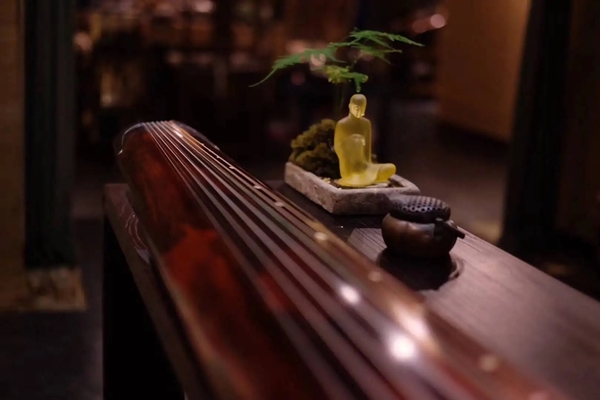Artistic breathing in Guqin performance: An analysis of breathing techniques and their importance
In ancient Chinese music culture, Guqin is deeply loved by people because of its profound cultural connotation and unique charm. Guqin performance is not only a dance of fingers on the strings, but also an art of inner spiritual cultivation and breath control. Among them, breathing technique, as one of the core elements of Guqin performance, is not only related to the delicate expression of music and the transmission of emotions, but also the key to the harmony of the player's body and mind and the integration of internal and external.

First, the integration of breath and Guqin artistic conception
Guqin pays attention to the philosophy of "harmony between heaven and man", and the breathing rhythm during performance directly affects the expressive force of the music and the construction of the overall artistic conception. As stated in "Eight Rules of the drum and the piano", the piano must adjust the air, the air and the sound can present the quiet, deep and harmonious elegance of the Guqin music. This requires the performer to be calm and breathe calmly before playing, so that every breath can be integrated into the melody, so as to achieve the perfect blend of sound and breath.
Second, the synchronization of breathing and techniques
In actual performance, every note should be connected to the breath. For example, playing should not cause shortness of breath or breathlessness due to the range of movements, but should learn to adjust breathing freely in the process of changing strings, pressing notes, and walking hands. To achieve "with a feather on the nose and mouth, exhaling without moving" means that the use of breath is so fine that it can ensure the stability of the performance and the fluency of the music.
Breathing and emotional expression
Going deep into the emotional level of the music, the different melody lines and mood changes need to be breathed into life. Such as passionate place, the breath can be slightly compact with the acceleration of the rhythm; When lyricism is melodious, a more soothing and long breathing mode should be adopted to make the music full of ups and downs of vitality.
4. Methods and practices of breathing training
The improvement of breathing skills in guqin performance needs to be realized through long-term special training. This includes, but is not limited to, sitting meditation to cultivate a smooth breath, imitating the breathing exercises contained in ancient books, and constantly trying to combine breathing with fingering and rhythm in actual performance, gradually reaching the ideal state of "qi moving with one's heart and mind moving at will".
To sum up, the breathing technique in guqin performance is not an isolated skill, but the soul that permeates the whole playing process. Only through careful understanding and persistent practice, the performer can convey the spirit and meaning through the invisible power of breathing in the interpretation of each piece of music, and then reach the highest realm of Guqin music art.
 渝公网安备 50010702504639号
渝公网安备 50010702504639号